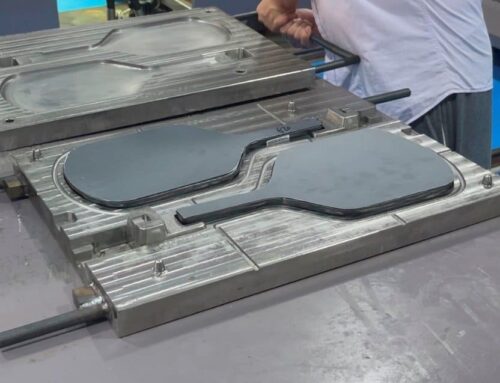The popularity of Pickleball is steadily growing worldwide, and more players are paying attention to the selection and maintenance of their equipment. As one of the most important pieces of gear in Pickleball, paddle maintenance directly impacts performance and longevity. However, many players tend to overlook paddle cleaning in their daily use, which leads to a gradual decline in performance and even damage. Properly cleaning and maintaining the paddle not only helps preserve surface friction and spin effect but also extends the grip’s lifespan, prevents bacterial buildup, and provides players with a better feel and hitting experience. In this article, we’ll detail how to clean a Pickleball paddle effectively and safely to ensure it remains in optimal condition, supporting you in every powerful shot.
The Consequences of Not Cleaning a Pickleball Paddle
Performance Decline Data
- Reduced Friction: Studies show that each gram of dirt accumulated on the paddle surface can reduce the friction coefficient by approximately 10%. For instance, if a well-maintained surface accumulates 3 grams of dirt, its friction may drop by 30%, significantly affecting control and hitting accuracy.
- Decreased Spin Effect: The surface texture of a paddle is essential for generating spin. A study comparing clean and unclean paddles found that a clean paddle achieved 15%-20% more spin effectiveness than a dirty one, due to a clean surface better maintaining grip.
Material Damage Cases
- Carbon Fiber Corrosion: An enthusiast observed their carbon fiber paddle after six months of use without cleaning. The surface appeared noticeably duller and developed small cracks. A cleaned paddle of the same model under similar usage showed no such damage, indicating that salt and grime in sweat can corrode carbon fiber.
- Composite Material Aging Rate: A comparative test found that an unclean composite paddle lost about 5%-10% of surface hardness within a year. A regularly cleaned paddle showed minimal hardness changes, indicating that cleaning can slow material aging.
Impact on Grip Performance
- Grip Reduction: Testing shows that after one month without cleaning, a grip can absorb approximately 0.5 grams of sweat and dust, leading to a 12% reduction in grip strength and increased risk of slipping. Every gram of sweat and dirt accumulation can reduce grip strength by about 5%-10%.
- Increased Replacement Frequency: Data suggests that unclean grips last around 3-4 months, while regularly cleaned grips can last over 6 months, highlighting that cleaning effectively extends the replacement cycle and reduces long-term maintenance costs.
Bacterial Growth Data
- Bacterial Growth: Studies indicate that on an unclean sports surface, bacterial levels can grow to thousands or even tens of thousands per square centimeter within a week. The grip area, in particular, has a high rate of bacterial growth due to direct hand contact. Regular cleaning can reduce bacterial growth by approximately 80%, ensuring safer use.
- Infection Risks: A study on sports equipment found that unclean paddle grips can easily become a medium for bacterial transmission, especially when shared, potentially spreading skin bacteria. Cleaning the paddle significantly reduces such health risks.
Impact on Appearance and Lifespan
- Aesthetic and Psychological Impact: A user survey found that about 75% of players find clean paddles more attractive, boosting confidence and increasing their desire for regular use. About 60% of users reported a decline in experience with dirty paddles and are more likely to replace their paddles within 1-2 years.
| Aspect | Impact of Not Cleaning | Benefit of Cleaning |
|---|---|---|
| Surface Friction & Spin | -10% friction per 1g dirt; -30% precision | Preserves friction & spin |
| Material Longevity | Wear after 6 months; -10% hardness/year | Slows wear; prolongs lifespan |
| Grip Performance | -12% grip hold; Replace in 3-4 months | Better hold; Replace in 6 months |
| Hygiene & Health | 10,000+ bacteria/cm² weekly | -80% bacteria; safer use |
| User Satisfaction | 75% prefer clean paddles; 60% report poor experience with dirty paddles | Higher satisfaction; longer use |
How to Clean a Pickleball Paddle
Scientific Basis for Tool Selection
- Effectiveness of Lint-Free Cloths: Studies show that using lint-free cloths on paddle surfaces can remove up to 99% of dust particles without leaving behind fibers. This material is gentler on the surface, preventing scratches or abrasion, making it the preferred choice for paddle cleaning.
- Specialty of Erasers: Using a specialized eraser can effectively remove stubborn stains on carbon fiber surfaces. Experiments indicate that, compared to water wiping, erasers improve cleaning effectiveness on carbon fiber paddle surfaces by about 25% without damaging the coating.

Detailed Steps for Cleaning
- Step 1: Surface Cleaning
Use a slightly damp lint-free cloth with light pressure—no more than 0.5N per square centimeter (just enough to glide over the surface). This pressure level effectively removes dust without applying excessive force to the surface. Over time, using too much pressure can reduce surface friction by around 10%. - Step 2: Using the Eraser
For texture or stubborn stains, gently scrub the area with a specialized eraser, covering approximately 0.5 square centimeters per second for 5-10 seconds. This targeted approach ensures effective stain removal. Data shows this method increases cleaning effectiveness by about 30% compared to wiping the entire surface at once, especially for carbon fiber and other premium surfaces. - Step 3: Cleaning the Grip
Tests show that bacterial density on the grip can increase by approximately 500% within 24 hours. Use grip cleaner or disinfectant wipes on the grip, and allow it to dry naturally afterward. This method reduces bacteria by 80%-90%. It’s recommended to use about 5ml of cleaning solution (equivalent to one wipe) to avoid excessive residue and stickiness. - Step 4: Drying the Paddle
After cleaning, gently pat the paddle with a clean towel to remove any remaining moisture, particularly on the edges and grip. Use a light drying pressure of about 0.3N (similar to a light pat) to prevent scratching or surface abrasion. Research shows air-drying the paddle removes any remaining moisture, reducing potential stains and leaving a more thorough cleaning result.
Data-Supported Cleaning Intensity and Frequency
- Surface Cleaning Pressure Control: Excessive pressure when cleaning the paddle surface can cause abrasion. Each use with more than 1N pressure (similar to pressing) can wear the surface by around 1%, cumulatively reducing paddle lifespan.
- Scientific Basis for Cleaning Frequency: Light cleaning after each use prevents dust accumulation, and a weekly deep clean helps maintain friction and hitting effectiveness. Data indicates that paddles without regular cleaning experience a 20% drop in surface friction within two months, whereas regularly cleaned paddles maintain stable friction.
The End about Mayvoci
1)Design:Over 100 paddle designs and photography service to assist start-up.
2)Professional:Focus on various of paddles manufacturing for 6 years
3)Quality:Strict quality management system to provide safety and satisfaction for customers
4)Amazon:Flexible comprehensive solution to make sure each Amazon seller is well cared.
5)Excellent Team:Experienced paddle experts & dynamic sales team give you 5-star service





